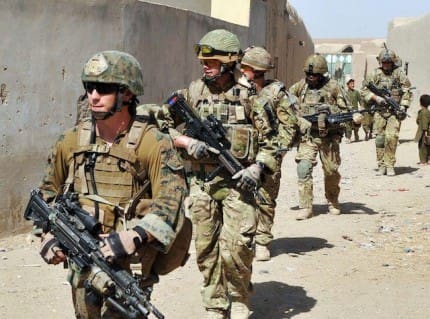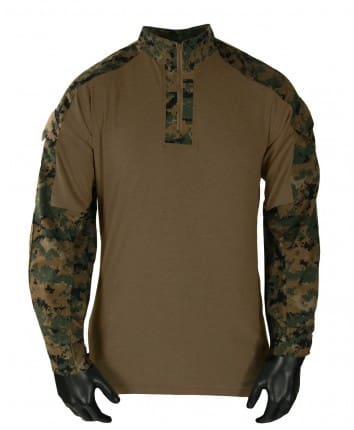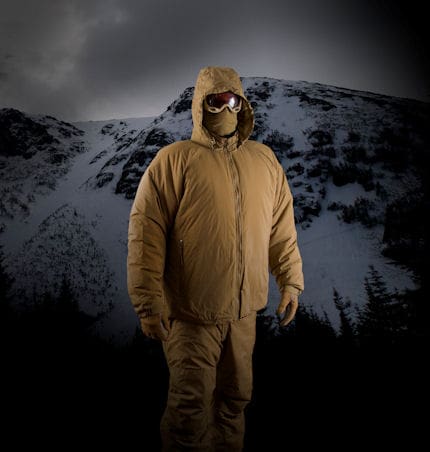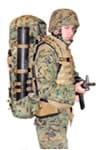MARCORSYSCOM has issued a Sources Sought Notice for companies capable of “designing, developing, and procuring an Improved Armor Carrier Suite (IACS) that may be incorporated within the Full Spectrum Battle Equipment (FSBE).” The RFI goes on to state that, “The notional suite would consist of the following: one (1) Releasable Tactical Vest (RTV), one (1) Releasable Plate Carrier (RPC), one (1) Low-Visibility Tactical Vest (LVTV) and one (1) Low-Visibility Plate Carrier (LVPC) that support/integrate the respective armor cuts, identified hard armor inserts/ancillary armor additions and load carriage systems.” So basically, not only are they looking to update the armor carrier but also add some additional capability.
Descriptions of each component from the RFI:
The RTV will support SPEAR profile soft armor. The RTV must integrate with the SPEAR MSAP soft armor/pouches (Groin and Deltoid), SPEAR Releasable Ballistic Armored Vest (RBAV) Collar Armor System (CAS) and Improved Modular Tactical Vest (IMTV) lower back protector.
The carrier will posses PALS webbing for the mounting of modular pouches, have a single pull release located on the center of the vest below the neckline and integrate with the USMC Chest Rig without impeding the quick release of the carrier. The RTV must integrate with the USMC IMTV cummerbund and incorporate it into the release of the system without additional hardware or procedures. The RTV will incorporate an optional internal cummerbund to mitigate load. When used, the internal cummerbund will not interfere with the release of the system. The RTV will provide for an optional cummerbund that must support the carriage of the SPEAR MSAP 6×6 plate and allow for adjustment.
The RPC will support USMC PC profile soft armor. The RPC must integrate with the SPEAR MSAP soft armor/pouches (Groin and Deltoid) and IMTV lower back protector. The RPC will posses PALS webbing for the mounting of modular pouches. The RPC will have a single pull release that is identical in location, function and assembly to that of the RTV. The RPC must have the option to be worn without a cummerbund while still maintaining single pull release capability. When worn with a cummerbund, the RPC must integrate with the USMC Chest Rig without impeding the quick release of the carrier. The RPC must integrate with the USMC IMTV cummerbund and incorporate it into the release of the system without additional hardware or procedures. The RPC will provide for an optional cummerbund that must support the carriage of the SPEAR MSAP 6×6 plate and allow for adjustment.
The LVTV will support SPEAR profile soft armor. The LVTV must integrate with the SPEAR MSAP soft armor/pouches (Groin and Deltoid), SPEAR RBAV CAS and IMTV lower back protector. The carrier will integrate with the USMC Chest Rig. The LVTV must support the carriage of the SSAPI with soft armor backing and/or the SPEAR MSAP 6×6 plate and allow for adjustment.
The LVPC will support USMC PC profile soft armor. The LVPC must integrate with the SPEAR MSAP soft armor/pouches (Groin and Deltoid) and IMTV lower back protector. The LVPC must have an option to be worn without a cummerbund. When worn with a cummerbund, the LVPC must integrate with the USMC Chest Rig. The cummerbund of LVPC must support the carriage of the SSAPI with soft armor backing and/or the MSAP 6Âx6Â plate and allow for adjustment.
First off, it’s important to note that this program is for FSBE which is not a general issue program. FSBE fielded the first cut-away armor carrier (Amphibious Assault Vest, Quick-Release) after a catastrophic helo accident in December, 1999 that resulted in the death of seven Marines who could not ditch their equipment. FSBE is designed for use by the Force Reconnaissance community, Fleet AntiTerrorism Security Teams (FAST), and MEU (SOC) Helicopter Assault Companies. Since the user community is relatively modest, the numbers aren’t really big for this program (current FSBE is around 7500 individual kits). Also, this RFI isn’t looking to replace all of FSBE’s components, but rather to revamp the armor components. In fact, the RFI states that it must be compatible with current issue pockets which we take to mean FSBE pouches and Family of Pouches as well as the Marine Corps Chest Rig.
Because the original FSBE AAV was developed before SOCOM’s SPEAR cut armor, it had a proprietary cut. Several years ago, the Marines adopted the Eagle Industries Combat Integrated Releasable Armor System (CIRAS) vest as FSBE II which uses a SPEAR cut. Moving to the SPEAR standard allowed the Marines to use soft and hard armor that is more readily available and well understood by industry as well as leverage larger purchases by other groups. The same goes for the IMTV components and PC armor already in the Marine Corps inventory.
Based on the desire to integrate with current Marine issue load carrying equipment as well as more common armor components shows that they are taking a very pragmatic approach to modernizing FSBE.
We would be remiss of we did not point out that this is still only an RFI and that the Marines are using this to find out what is in the realm of the possible so that they can develop the full requirements package. Having said that, the RFI opens the possibility of a “user evaluation”.
“A limited quantity (i.e. up to 30) of evaluation systems may be requested under a bailment agreement to support user evaluation activities based on market research results. No user evaluations are planned prior to March 2011.”
On a final note, it’s best that we leave with you with the submission cutoff. Responses should be received not later than January 13, 2011. Additionally, the USMC will have representatives attending the 2011 Shooting, Hunting and Outdoor Trade (SHOT) Show and will be available on January 20th and 21st for 15 minute visits in a respondent’s booth.
Make sure you read the entire RFI at www.fbo.gov.



















































































































